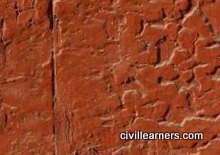

All are unglazed which increases the drama, pathos and beauty of the artifact. Objects are shown against a black background in either overhead or side view in order to fully appreciate their form. The detail may appear sketchy or in caricature, but most are highly detailed with even tiny pieces of jewelry clearly depicted in clay. Some may belong to more than one category. Some objects are clearly defined the utility of others is more mysterious. It’s incredible that common household items that were in everyday use – including whole basins 40-cm-wide – were discovered in relatively perfect condition, not in pieces. The artifacts cataloged in Majapahit Terracotta are divided into four broad categories based on use: household items and containers such as bowls, ewers (kendi) and pots of various shapes and sizes models of temples and other miniature buildings for garden decoration ornamental statues in the form of heads and bare-breasted female figures serving as pedestals or home decorations figurines which functioned as flower or incense holders.

The lack of knowledge in the field means that it’s very easy to be taken in by realistic-looking reproductions, which have been produced by village craftsmen around Trowulan since the 1950s (and even earlier) that are sold in art markets in Surabaya and Jakarta in massive numbers.


What is known is complicated by the many fakes and replicas found in antique markets. For that reason, the terracotta fragments of the Trowulan were not highly valued. For decades, terra cotta was considered a ‘lesser” or ‘minor’ field compared to art made of bronze, stone or gold.
#Terracotta fragments meaning full
Yet not much is known about the full meaning of these artifacts, including not even the exact date when each piece was unearthed in Trowulan area. These relics are a vivid reminder of the most celebrated Javanese kingdom, offering a palpable trace of the aesthetics that help shaped the study of early Javanese art and history. In the context of Majapahit, terra cotta indicates artifacts produced as statuary, ornamental building materials, garden and temple decorations, and containers and vessels for everyday use that were first sun-dried before being fired in simple open kilns. Terracotta originates from the Italian terra cotta, “burnt earth,” denoting an unglazed, usually brownish-red pottery or clay object. Each piece in the book has been carefully chosen for their aesthetic qualities and cultural features, covering virtually the whole range of terracotta production offered in the antique market. He began to acquire these objects based on personal fascination. Damais has collected in the course of these 30 years hundreds of Majapahit terracotta pieces, including not sculptures and house ware, but architectural fragments and miniature buildings. The book presents a selection of 73 pieces acquired by the author between the years 1970 to 2000. A fraction of these incidental finds form the valuable and enchanting collection that are examined in this book. For example, we can see from intricately detailed cloth patterns and hair ornaments on these clay statuettes what the women of the Majapahit period wore as everyday attire. The brick structures of the ancient city, including gateways, temples and pools, can be still be seen around the village of Trowulan just outside of Mojokerto, reflecting the architecture that once defined the capital.īesides these ancient structures, inscriptions and stone statues, this mighty kingdom also left exquisitely executed testimonies of everyday life in the form of terracotta artifacts, which farmers and road builders have accidentally unearthed over the centuries. Majapahit reached its peak during the reign of Rajasanagara, popularly known as Hayam Wuruk (1350-1389). The Majapahit Empire (13th-16th century) – Indonesia’s greatest maritime power – was based in the present day regency of Mojokerto, East Java.


 0 kommentar(er)
0 kommentar(er)
